MusicRadar Verdict
It's the little amp with a very big voice, that you can take to all your gigs.
Pros
- +
Flawless, UK-built construction. Switchable power feature adds versatility. Crystal cleans, smooth overdrives and sings at high gain settings.
Cons
- -
It's a crowded market - some rivals offer very respectable amps at better prices.
MusicRadar's got your back
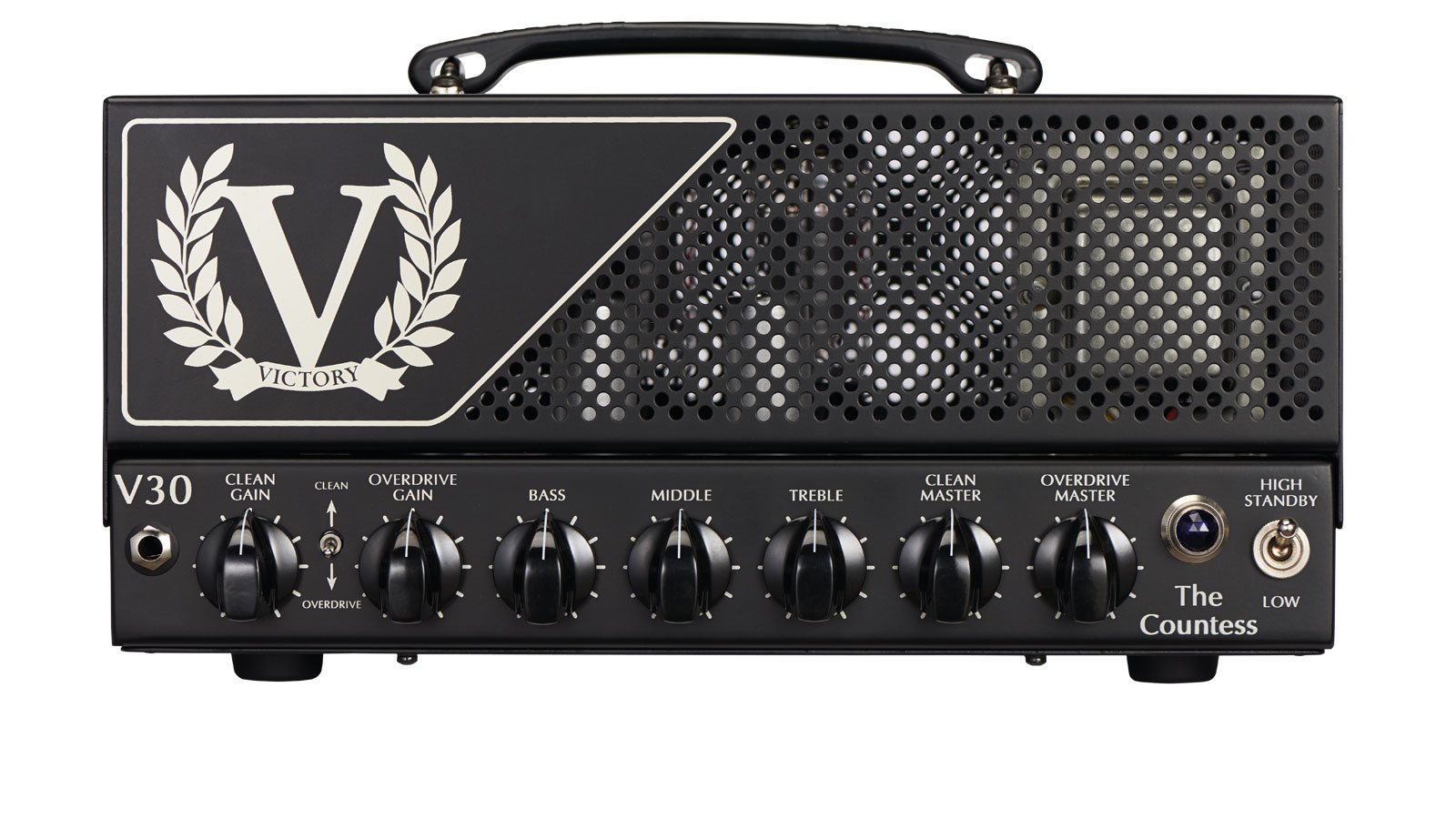
Victory V30 'The Countess'
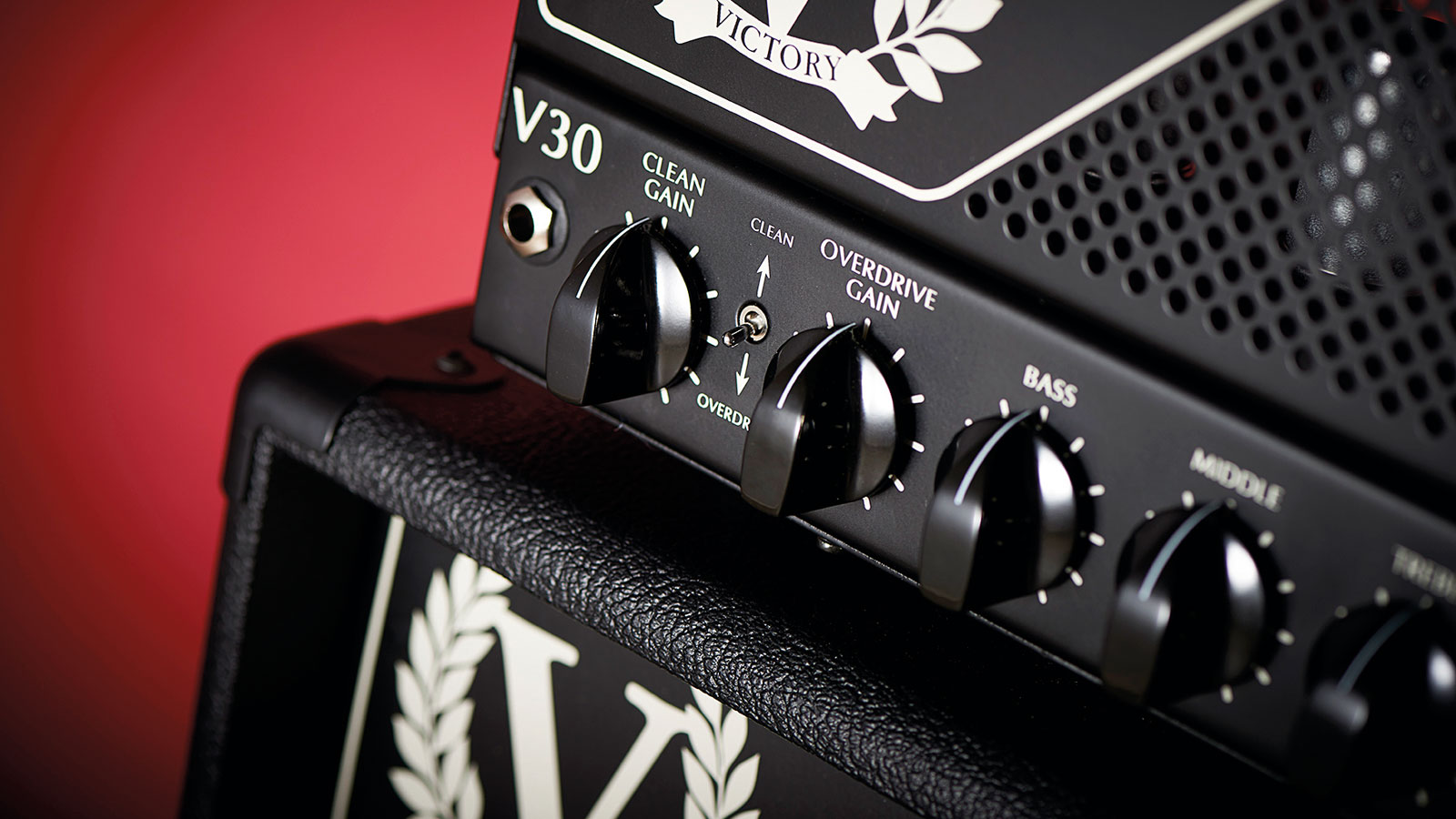
Gain
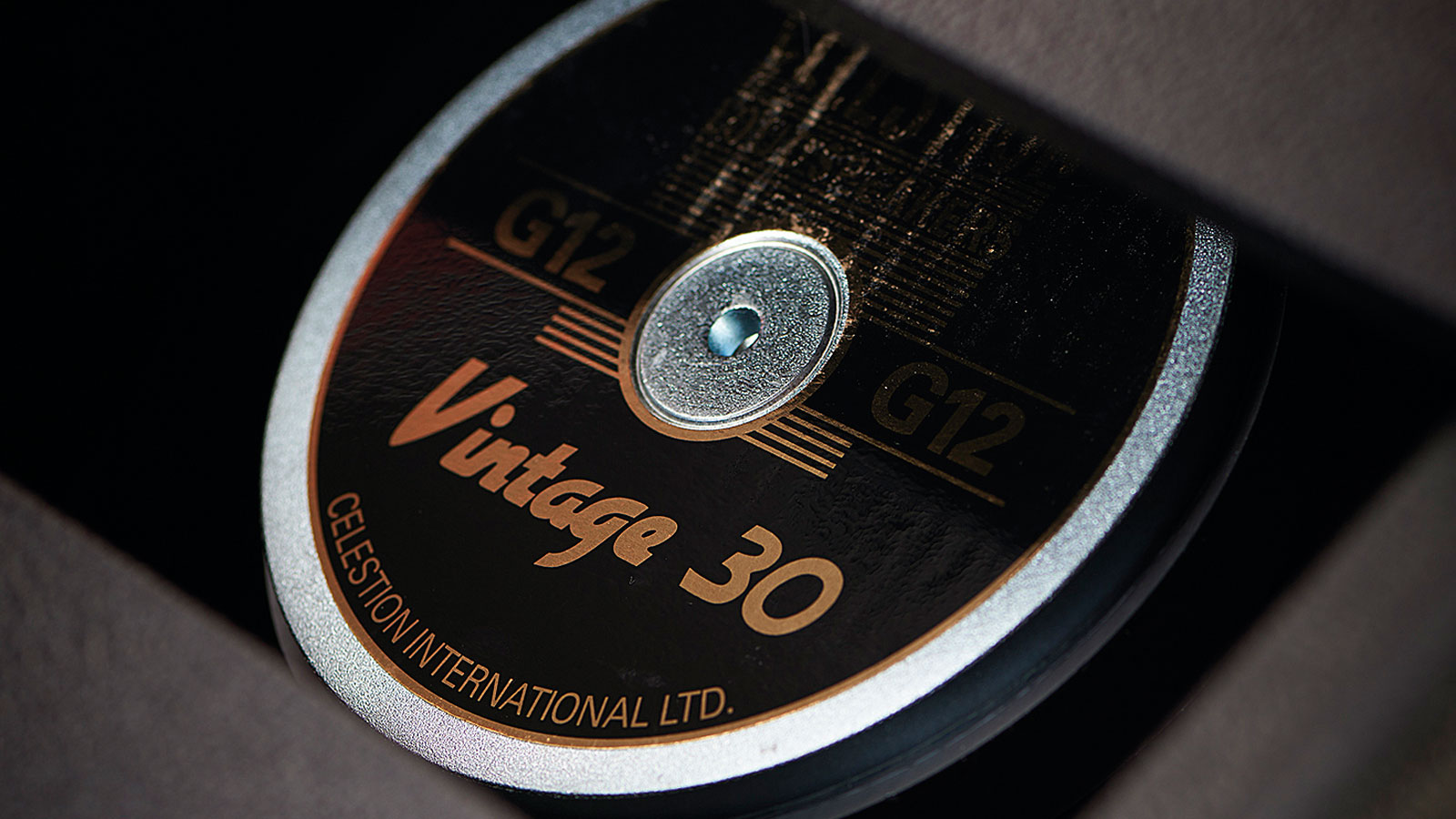
Output
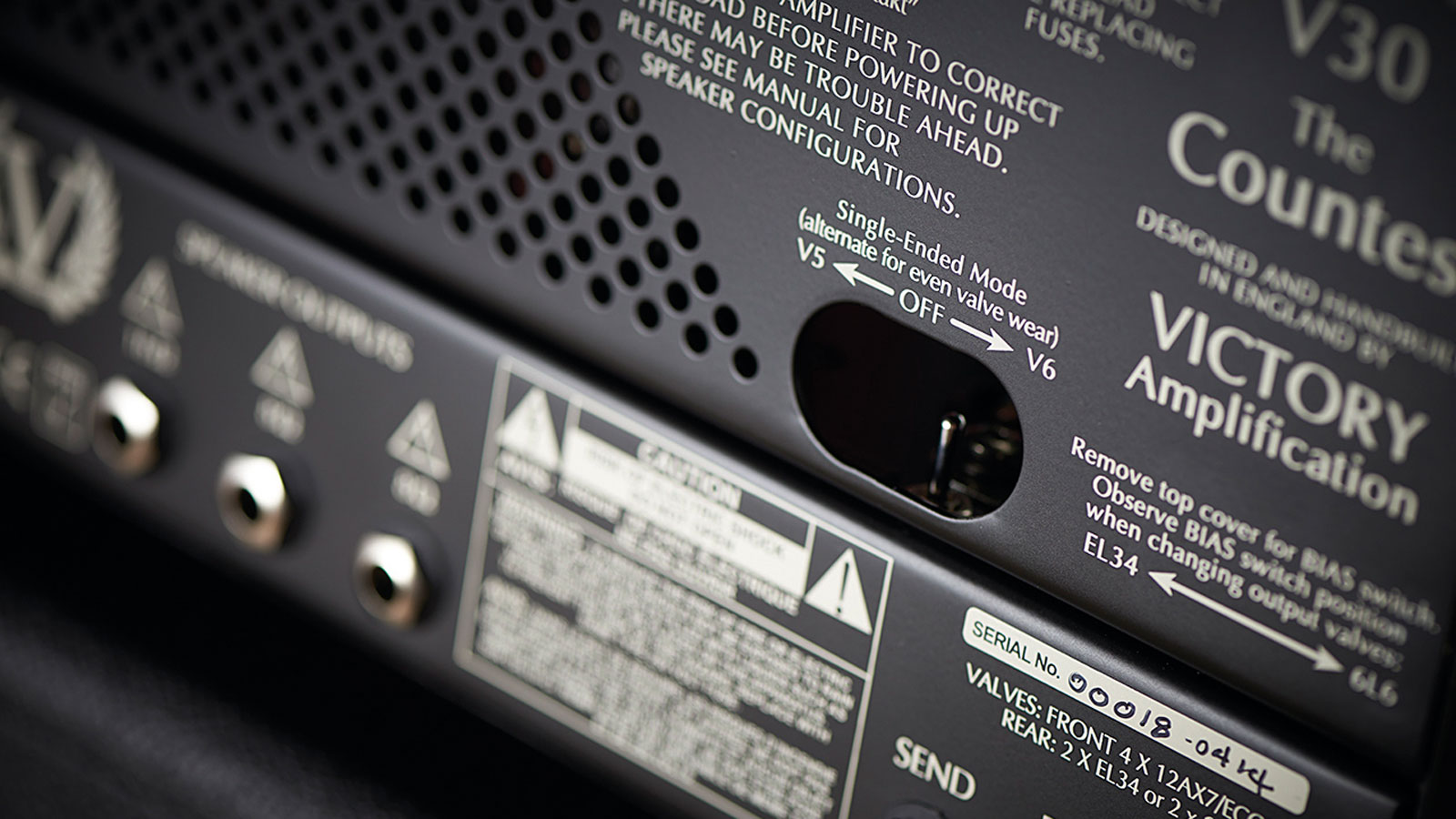
Mode
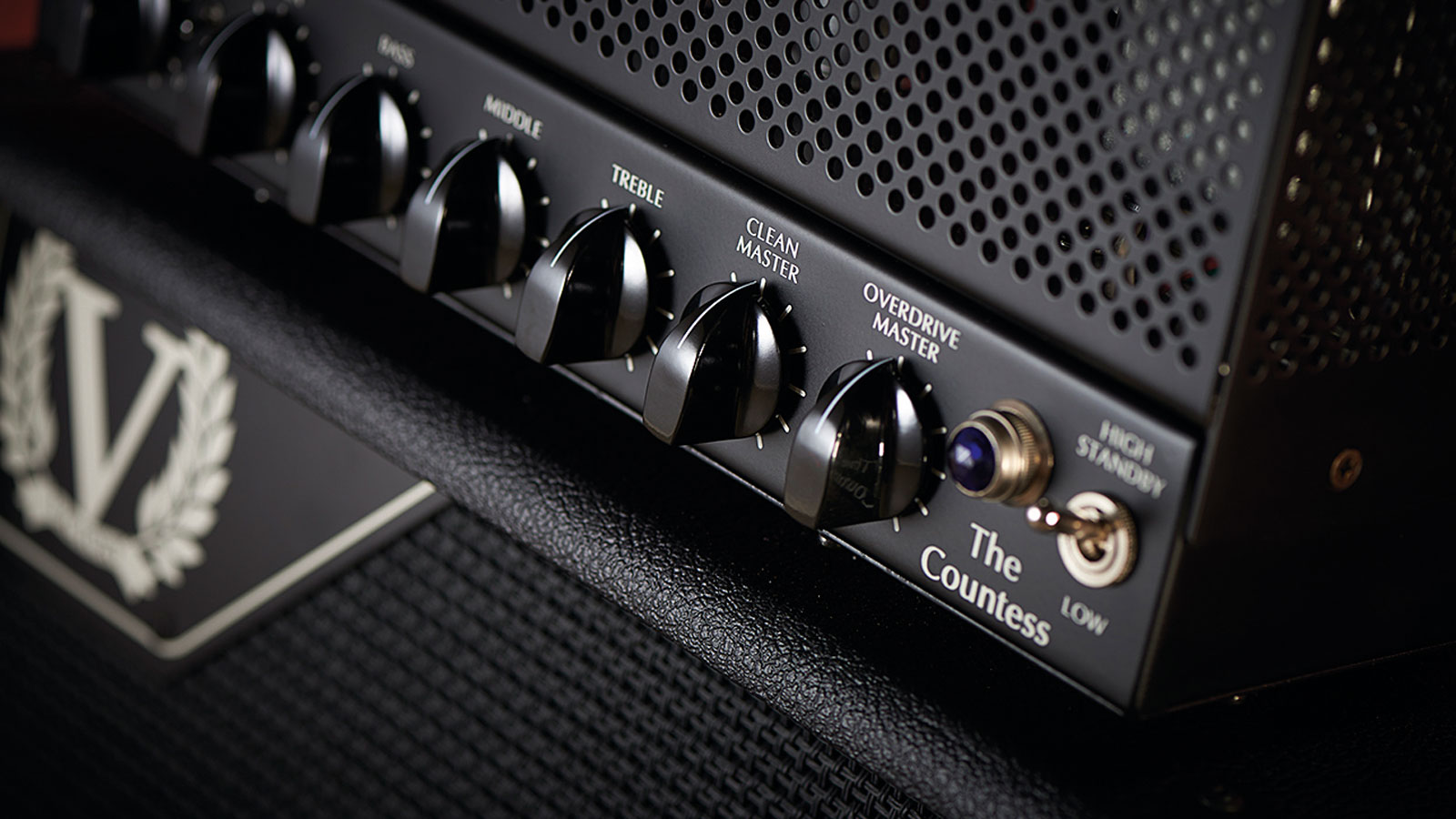
Overdrive
Victory Amplification is on a roll at the moment, with a hot reputation building up around its new amp range, two of which we recently reviewed. Now it's time to look at possibly the most anticipated amp we've seen so far this year: the new V30 'The Countess' head.
Designed with input from the supremely talented Guthrie Govan and used by Guthrie as his 'flying amp', the V30 is housed in a steel chassis, with a perforated steel cover over the valves and transformers.
"Most of the components are PCB-mounted on a very high-quality board, with exceptionally neat wiring and layout"
Inside the chassis, most of the components are PCB-mounted on a very high-quality board, with exceptionally neat wiring and layout. Component quality is absolutely first rate - as you'd expect.
Despite the small size, the control panel still manages to cram in two pairs of gain and master volumes for the clean and overdrive channels, together with a standard bass, mid and treble EQ section. There's a toggle switch for channel changing when the footswitch isn't plugged in.
Around the back, there's a trio of speaker outlets and a pair of send/returns for the series effects loop, together with a switch that lets you change the V30 from regular push-pull mode into single-ended operation, where just one valve does all of the work.
With admirable attention to detail, this switch can turn off either of the two 6L6 output valves, so that wear can be evened out. Used in conjunction with the front-panel standby switch, which allows full- or half-power operation, this means the V30 can be run at outputs ranging from 30 watts right down to two watts.
Lurking underneath the steel cover is another secret switch that changes the bias range to suit EL34 output valves rather than the 6L6 type fitted as standard.
The overall impression is one of rock-solid reliability and clean, functional design. If you're Guthrie, the last thing you want if you fly off to Reykjavík, is to plug your amp in for a soundcheck and find it isn't working. The V30 looks as if it will survive any mishap short of a volcanic eruption: the steel case is thicker than most similar amps we've seen, and the soldering and connections are perfect.
Sounds
The V30 powers up with almost no mains hum and just a little hiss, indicating that - like all the Victorys we've seen - the circuit is well sorted. We tried several instruments, including a Strat with regular low-medium output Duncan Alnico Pro single coils, a Les Paul Standard with PAFs and an early 70s Les Paul Custom with the original embossed logo pickups.
The V30's clean channel is very clean, with a lot of headroom and a fast, spanky response that makes notes sound as if they're jumping out of the speaker cabinet.
"The overdrive channel features the smooth, liquid sustain with a characteristic bite that we've heard on other Victory amps"
By contrast, the overdrive channel features the smooth, liquid sustain with a characteristic bite that we've heard on other Victory amps. It really sings at higher gain settings, sounding truly magnificent for the kind of wide-ranging shred-tastic stuff that Guthrie is known for.
We couldn't really detect a sonic preference: the V30 sounded equally good with single coils and humbuckers, with perhaps the best overall result coming from the darker tones of the classic LP Custom.
As with any amp that shares a single EQ between clean and overdrive channels, there often has to be a degree of compromise: the best EQ settings for the V30's lead sounds leave the clean channel sounding a little flat, but the difference is quite small and something we could live with.
The V30's simple series effects loop sounds good, and worked fine with an inexpensive stompbox-type multi-effects unit supplying a little reverb and chorus. This ambience opened up the V30's sounds without detracting from them: unlike some high-end amps, the V30 isn't particularly fussy about effects and actually seems to enhance the tone of lower-quality ones.
We also tried a TC Electronic G-System, and found little difference in quality, apart from an expected reduction in hiss with the more expensive unit.
The metal-cased 'lunchbox' amp market is one 3 of the most crowded there is, with many brands fighting for a share and a bewildering range of models. The V30 comes in towards the top end of the price range but with some significant justification, not least that it's made in the UK by one of the country's most respected and knowledgeable amp designers.
The switchable power feature adds a lot of versatility and makes the V30 a great choice for players who want portability without sacrificing tone or volume. The best news? You don't need to be a virtuoso to sound good on one, or a doctor to afford one.
"I said, “What’s that?” and they said, “It’s what Quincy Jones and Bruce Swedien use on all the Michael Jackson records": Steve Levine reminisces on 50 years in the industry and where it’s heading next
“Excels at unique modulated timbres, atonal drones and microtonal sequences that reinvent themselves each time you dare to touch the synth”: Soma Laboratories Lyra-4 review
“I used everything I knew about music”: How Green Day exceeded expectations with their most ambitious song









